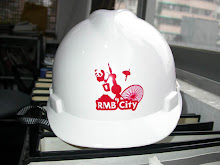To expand our thinking of how a city can be imagined, we wrote city poems. Each person begins with a sheet of paper and writes a statement about a city. They fold the top of the paper down to cover what they wrote and then pass the paper along to the next person who reads the first statement and then writes their own statement which is the opposite of the previously written statement. They cover what they wrote and pass it along again. Each person covers what they wrote and the new person only reads the previous statement and writes the opposite and so on. These are the cities we imagined...
A city that never sleeps
asleep by 10 pm
awake by 10 pm
fell asleep at 10 pm
i went to bed early last night
i haven't slept in days
i sleep all day every day
i am an insomniac
when you are in a big city there's Bright lights and events everywhere, and tons of places to go, you never stop.
the city can make you feel excluded or unattached because there are so many people and places.
i always feel warm and welcome in a department store
i almost never feel itchy and scratchy in a prison
i get the best medial treatment in prison
canada's health care system is the talk of the town
canadian bacon is the talk of the town
Cities where dreams come true
the city is a place where people suffer to live their reality
the city is a place where everybody chases their nightmares
the city is a place in which nightmares haunt those with problems most at night...seeping in through the window.
the city is a happy place with sunshine and rainbows. People have bright and colorful dreams
a city filled with a younger crowd during the winter
a city full of middle aged singles in tropical weather ready to party
a city with no middle aged singles that's not tropical, not able to party
single and ready to mingle, “cosmopolitan anyone?”
married and celibate anyone?
boring and wild
a place of dreams
a place of nightmares
people here never sleep
a city in which everyone lives on north, south, east, and west elm street.
mayor freddie krueger runs the city very tightly
freddy krueger runs his city loosely
son of sam ran a tight ship
daughter of jill didn't own a ship
I thank
Laura Jean Mclaughlin for introducing me to this technique of prying the brain loose from its routine thinking. It comes from a book titled
”Surrealist Games“











